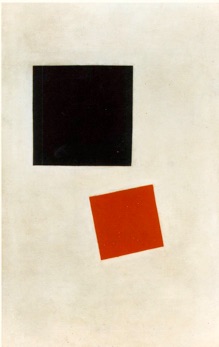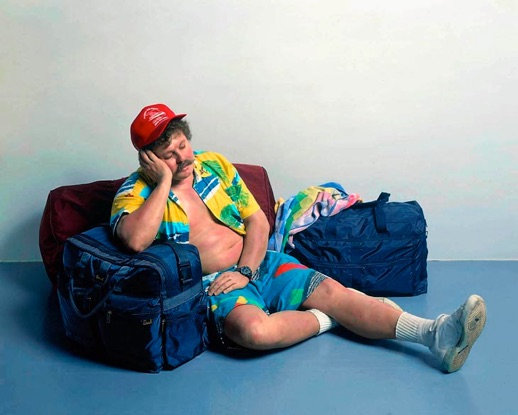Naturalism is resemblance to the “real world,” as we see it. The more naturalistic a work, the more it looks like our world, and the less naturalistic, the less so. For extremes, we might look at a detail from Caravaggio’s highly naturalistic The Doubting of Thomas, and can compare that to Pablo Picasso’s Cubist Portrait of Daniel-Henry Kahnweiler. In Caravaggio’s image, the man’s face is rendered in minute, realistic detail. His hairs are individually rendered, his features distinct and recognizable, his skin browned from the sun and from dirt. All this adds up to naturalism. Picasso’s portrait, on the other hand, is barely recognizable as a human face. The elements have all been abstracted, stylized, and rearranged. This does not make it less good as a work of art, and also does not mean that the artist was less skilled. Rather, it is simply a different style, a far more abstract, less naturalistic style. Indeed, Picasso believed that he was giving his viewers more credit — and more to do — since he expected them to work to piece together his fragmented images into wholes.
The highest degrees of naturalism are referred to as verism. Roman Republican portraits are highly veristic. Note how these two rendered every wrinkle and furrow:
The farthest extent of abstraction, on the other hand, is non-representational or non-objective art, in which the subject is not merely abstracted, but wholly absent. This type of art, which many viewers find highly challenging, makes little or no reference to the natural world, such as Kazimir Malevich’s geometric paintings, like his Black and Red Squares:

There is one other way, though, that we can speak of naturalism. Instead of contrasting it with abstraction, we can contrast it with realism. We would have to determine that Doryphoros, who also appears in Proportion and Scale, and Balance, is highly naturalistic, in that he looks very much like a living person:
However, if we are being honest, we would have to admit that while a person could look like this, rather few of us do. It is highly idealized. Indeed, his proportions were designed by a mathematician in order to be “the ideal man.” In this sense, the work lacks naturalism, in comparison to works by Lucian Freud, such as his Leigh under the Skylight, to the right. This work is not painted with great naturalism, in that the work is clearly a painting, with clear brushstrokes and a loose style. On the other hand, the work is highly naturalistic, in that the artist has presented us with a figure that is ordinary, rather than idealized.
Some works, of course, like those by Duane Hanson, have both forms of naturalism. His life-size sculptures of people revel in their ordinary nature, and are also startlingly lifelike, so much so that they are frequently mistaken for real people when on display in museum exhibitions. I’ve been fooled by two of them, over the years. One was dressed as a museum guard and another as a workman.






